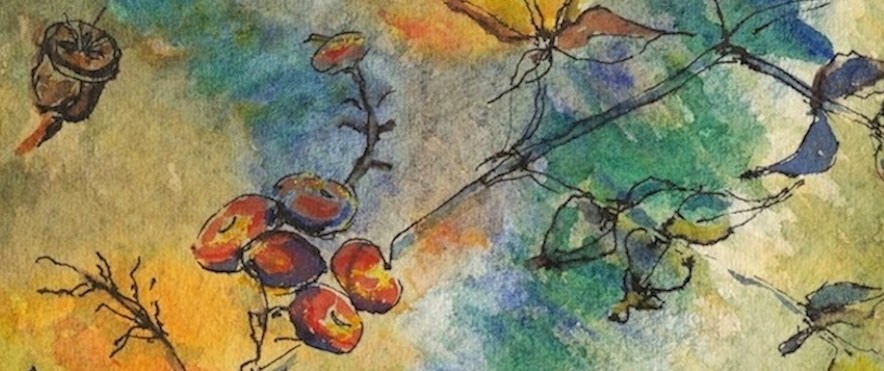During this past week I’ve been gearing up to start the People in Motion assignments. I bought some new sketching tools—notably the Pentel Calligraphy brush and hauled out my dip pens and inks. I even splurged for several ‘scribblers’—Fabriano’s EcoQua sketchbooks (5.75 x 8 in.), which have a very nice paper, with a smooth surface and a weight of 60lb/85gsm. They have colorful and sturdy covers. Luckily these were 40% off at the local art store.
Next I tackled the assignments which are part of the course:
1. Traced figures in magazines, first in pencil, then drew over them in ink. Learned to watch for folds in clothing to hint at the figure within.
2. Sketched figures ‘in action’ from a video. Focused on trying to pick up the action in multiple steps an an actor moved through a scene. Looked for anchor points.
3. Went to the food court at a local corner mall and sketched people sitting outside and one person walking. My focus was on capturing the poses, and looking for anchor points. Tables and chairs complicated this, but I attempted to add parts of them.
What I learned:
1. Tracing figures took the pressure off trying to capture a pose and allowed me to focus on how clothes draped on the body and how folds emerged from the compression points of the fabric.
2. Sketching from a video was good practice for sketching the reality of moving figures. Knowing that the actor would reappear and not ‘take off’ reduced the anxiety of capturing a pose. I could focus on quick sketching and revise as needed.
3. Sketching outdoors at the food court was easier than attempts that I have made in the past and the figures looked less cartoon-like. Fortunately it was a balmy 68 degrees out side.
Thanks Marc for these suggestions—they were very helpful!




















